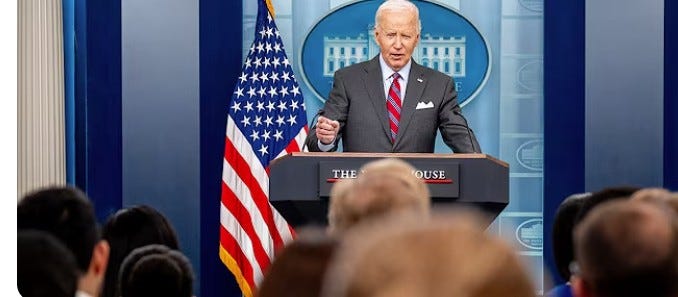Voting has already begun, and politics nerds are poring over voter registration and early vote numbers, especially in states that track party affiliation, to discern which candidate has the upper hand.
But extrapolating such data is treacherous business. Critical data about the nature of the Republican, Democratic, and Independent votes are unknown because we lack consistent historical patterns and discernable trends in current polling.
Here are the three data points that will remain hidden until the votes are counted:
1. Rate of partisan crossover
In swing states such as Arizona, Nevada, North Carolina, and Pennsylvania, election officials break down the number of registered and early voters by party affiliation. CNN.com explains how many Republicans, Democrats, and Independents have voted early in those states.
But we can’t know how many registered Republicans will defect and vote for Kamala Harris, nor how many registered Democrats will vote for Donald Trump.
We have a rough idea based on Pew Research Center’s post-election surveys of 2016 and 2020, which use large samples of “validated voters” and Election Day exit poll data for elections before 2016.
That data shows that the defection rate has dwindled to almost nothing. In a landslide, like the 1984 presidential contest, defections are big. Ronald Reagan won 26 percent of Democrats while runner-up Walter Mondale only snagged 7 percent of Republicans. The 2000 nail-biter had a modest crossover in both directions, which essentially canceled each other out: Democrat Al Gore picked up 11 percent of Republicans, while George W. Bush took 8 percent of Democrats.
With heightened political polarization comes fiercer partisan loyalties, so defections have become rarer. In 2016, Hillary Clinton managed to snag just 4 percent of the Republican vote and Donald Trump only 5 percent of Democrats. In 2020, Biden took 5 percent of the Republicans and Trump 4 percent of the Democrats.
But while the defection rates in 2024 may again run around five percent, we can’t know if the differences will remain within one point or if one candidate will find a way to poach a few more points from the opposition party’s pool.
October polling doesn’t help clarify matters. In 18 national polls I’ve examined with Democratic and Republican support levels broken out, Harris has a higher rate of partisan defection in ten, and Trump in five. In eight of the ten polls from the former group, Harris scores a defection rate at least 2 points higher than Trump’s, and her best score is 6 points. The five more favorable to Trump are barely so; his defection rate is never one point better than hers.
These poll results represent a wide range of outcomes for a tight race.
2. Skew of the independent vote
Despite our deepening polarization, independent voters still exist, and they swing.
Trump eked out a 1-point edge with independents in 2016, then lost them to Biden in 2020 by 9—a 10-point swing.
Independents also swung hard between Barack Obama’s two elections. He won them by 8 points in 2008 and lost them to Mitt Romney by 5 points in 2012.
Romney is a reminder that the independent vote winner doesn’t always win the election. John Kerry, another defeated presidential candidate, took independents by 2 points in his 2004 bid. In both cases, the partisan mix of the electorate changed in the incumbent’s party’s favor, lessening the need to win over independents.
In 2000, the electorate comprised 39 self-identified Democrats and 35 self-identified Republicans. But in 2004—in the aftermath of the September 11 attacks and the midst of the Iraq War, when Republicans were tarring Democrats as soft on terrorism—each was 37 percent, bringing a 4-point Democratic edge down to zero and buoying Bush’s reelection.
Then, in 2008—with the Iraq War unpopular and the economy in freefall—the Democrats surged back to 39 percent of the election as Republicans tumbled to 32 percent. That didn’t change much in 2012—the Democratic number ticked down to 38—allowing Obama to withstand a loss of independents.
Remember that most self-described independents lean toward one party—8 in 10, according to a 2019 Pew Study. Moreover, there can be differences between how voters describe their affiliations to pollsters and what boxes they check when registering to vote. For example, some registered Republicans might vacillate between telling pollsters they are Republicans or Independents, depending on how fed-up they are with their party at that moment. So, in 2012, left-leaning voters may have been more willing to call themselves Democrats, while right-leaners (or far-right-leaners) may have felt more comfortable with the independent label.
What does the independent pool look like in 2024? Again, polls are not giving us a clear picture.
In 22 polls sampled in October with support among independents publicly released, Harris leads among independents in 17 and Trump in 4. The average margin is Harris by 1.6 points, but the range of outcomes is wide. The Harris leads span from 1 to 9 points. Two polls have Trump’s lead in double digits, and the two others have less than five.
3. Rate and partisan makeup of early and Election Day voting
As mentioned above, CNN.com is tracking the partisan composition of the early vote in the battleground states where that data is available. In each of those four states, registered Republicans make up a bigger share of the vote than at this point in 2020.
Republicans seem to have largely wised up and set aside Trump’s nonstop badmouthing of early voting. However, many are still shunning vote-by-mail—which Trump still derides at times—and favoring in-person early voting instead.
We also don’t know if the increased Republican early participation will significantly expand their overall turnout or, in zero-sum fashion, cannibalize their Election Day vote.
And we also don’t know if Democrats will catch up with the help of mail ballots that have yet to arrive.
When examining Nevada’s early vote numbers, you can see how these three unknowns confuse the election picture.
Compared to four years ago, Democrats have lost ground in total voter registrations while Republicans gained. Then Republicans began the early vote season with impressive numbers, spooking Silver State Democrats accustomed to a big early vote “firewall” to withstand Republicans on Election Day.
However, the big winner in the voter registration contest is the independents. Nevada adopted automatic voter registration at its Department of Motor Vehicles in 2020. Since then, unaffiliated and third-party registration has nearly doubled and now accounts for a plurality of registered voters. And many of these new voters are younger voters.
Nevada’s top political reporter, Jon Ralston, the CEO and editor of The Nevada Independent, recently posted on X, “The fact so many indies skew young is what gives Dems hope they can negate the strong GOP turnout. That is, many of the indies are Dems in disguise.” And an amateur watcher of Nevada’s early vote, Dr. John R. Samuelsen, an Arkansan anthropologist, further noted younger independent voters tend to vote late.
We can’t know how many independents are Democrats in disguise and how robust they will eventually turn out. We also don’t know the defection rates of Republicans and Democrats who have voted.
Because of these big mysteries, be wary of extrapolation based on minuscule data. Don’t assume the election is over before the last vote is counted.










